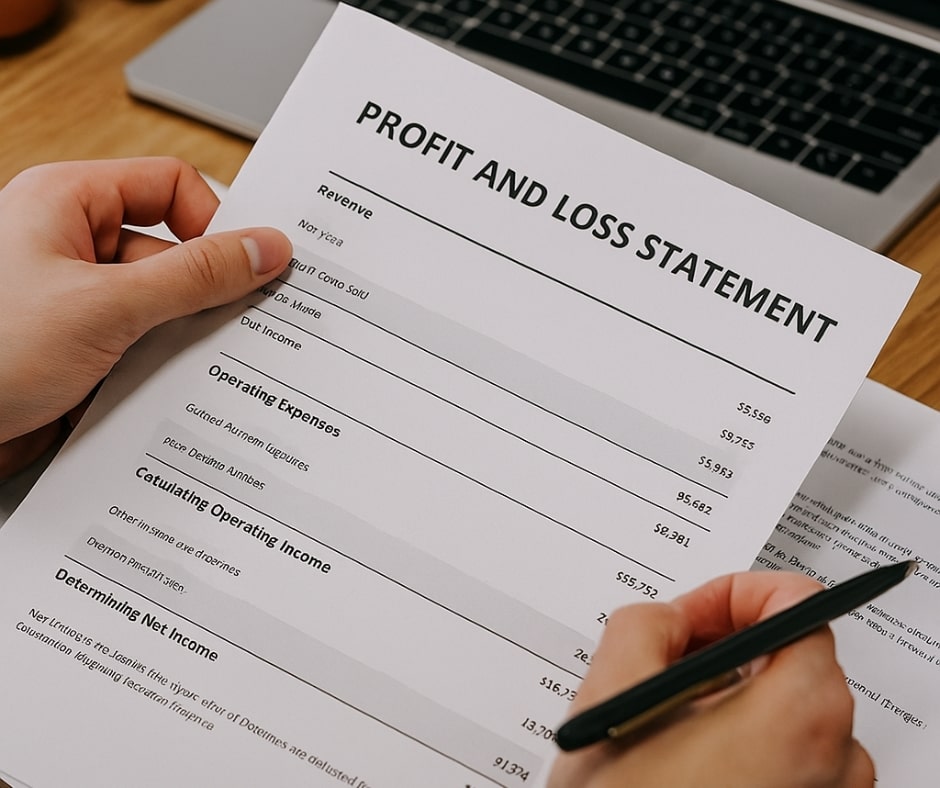For sustainable success, financial ratios business owners track often become the difference between thriving and merely surviving. These powerful indicators translate your financial data into clear, actionable insights. When interpreted properly, they illuminate what’s working, what’s not, and where your business can grow.
Let’s dive into the essential categories of financial ratios you need to monitor—and more importantly, understand how they drive better business decisions.
1. Profitability Ratios: Your Business’s True Performance Indicators
Profitability ratios are the heartbeat of any business. They help you determine how efficiently your company converts revenue into actual profit, which ultimately drives growth and sustainability.
- Gross Profit Margin shows how well you’re managing direct production costs. To calculate it, subtract the cost of goods sold (COGS) from total revenue and divide by revenue. A healthy margin indicates you’re pricing your products appropriately and controlling production costs.
- Operating Profit Margin digs deeper. It includes overhead, salaries, and other operating expenses. This ratio reflects how lean your operations are—helping you spot inefficiencies before they become major drains.
- Net Profit Margin is perhaps the most critical metric. It reveals the percentage of revenue that remains as profit after all expenses, including taxes and interest. This ratio is essential for evaluating long-term viability.
- Return on Assets (ROA) measures how efficiently your assets are used to generate profit. High ROA means your assets are being maximized. It’s crucial for capital-intensive industries.
- Return on Equity (ROE) reflects how well you’re using investor funds to generate profit. A consistently high ROE attracts future investment and signals sound financial stewardship.
Tracking these profitability ratios ensures you’re not just growing top-line revenue but also maximizing the bottom line.
2. Liquidity Ratios: How Well Can You Handle the Unexpected?
Liquidity ratios evaluate your business’s ability to meet short-term obligations. This is especially important during economic downturns, cash flow disruptions, or seasonal slowdowns.
- Current Ratio = Current Assets ÷ Current Liabilities
A ratio above 1 indicates you have more assets than liabilities, which is a healthy buffer. However, too high a ratio might suggest you’re not putting your resources to productive use. - Quick Ratio (or Acid-Test Ratio) removes inventory from the equation, providing a more conservative measure. It’s ideal for businesses with slow-moving inventory or unpredictable sales cycles.
- Cash Ratio, although rarely used daily, is helpful during crises. It considers only the most liquid assets (like cash and marketable securities) and shows your ability to survive without converting other assets.
Understanding these ratios helps you manage cash more strategically, avoid borrowing too much, and prepare for short-term financial challenges.
3. Efficiency Ratios: Measuring Operational Precision
Efficiency ratios show how well your business manages its assets and liabilities. They can reveal underperforming departments or highlight opportunities to streamline operations.
- Inventory Turnover Ratio = Cost of Goods Sold ÷ Average Inventory
This metric shows how many times your inventory sells out in a given period. Low turnover may indicate overstocking, while high turnover often reflects strong sales or lean inventory management. - Accounts Receivable Turnover measures how efficiently you collect payments. Slow collection affects cash flow, so a high turnover ratio is ideal.
- Accounts Payable Turnover helps you understand how quickly you’re paying suppliers. A slower turnover might give you better cash control but could damage supplier relationships if stretched too far.
- Asset Turnover Ratio compares net sales to total assets. It tells you how effectively you’re using your assets to generate revenue. The higher, the better.
Tracking these ratios can lead to cost-saving operational decisions, helping you do more with less.
4. Leverage Ratios: Managing Debt Without Sinking the Ship
Debt can fuel growth—but without strategic management, it can also threaten stability. Leverage ratios reveal how much risk you’re taking and whether your business can handle it.
- Debt-to-Equity Ratio = Total Liabilities ÷ Shareholders’ Equity
This ratio indicates how much your business relies on borrowing versus internal funding. A higher ratio suggests more debt, which can increase returns but also elevate risk. - Interest Coverage Ratio = EBIT ÷ Interest Expense
This tells you how easily your company can cover its interest obligations. If this number is below 1.5, your debt levels may be too high relative to your earnings. - Debt Ratio = Total Liabilities ÷ Total Assets
It helps you understand what percentage of your business is financed through debt. A lower ratio is generally safer.
Monitoring leverage ratios allows you to assess financial risk, secure favorable lending terms, and protect your company from overextension.
5. Market Ratios: Preparing for Investment or Expansion
Even if you’re not a publicly traded company, understanding market ratios prepares you for future funding, investment pitches, or partnerships.
- Price-to-Earnings (P/E) Ratio = Share Price ÷ Earnings Per Share
While more relevant to publicly traded firms, knowing how your valuation aligns with earnings gives you insights when negotiating deals or seeking investors. - Earnings Per Share (EPS) and Book Value Per Share offer glimpses into how stakeholders might value your business.
These ratios matter most when you’re scaling up, seeking investors, or planning an exit strategy.
6. Tools to Track Financial Ratios Efficiently
Fortunately, business owners don’t need to calculate these manually. Accounting tools like QuickBooks, Xero, Zoho Books, and FreshBooks can automate these ratios. Many platforms offer dashboards with real-time visualizations so you can see where you stand at a glance.
Integrate these tools with your CRM, payroll, and banking software to ensure data is accurate and insights are actionable. Additionally, monthly reviews with a CPA or financial advisor can help you catch trends you might miss alone.
✅ Final Thoughts
Monitoring the right financial ratios business owners should focus on is more than just good bookkeeping—it’s strategic intelligence. By routinely analyzing these key ratios, you’ll make data-informed decisions, reduce risk, improve profitability, and position your company for lasting success.
If you’re not currently tracking these metrics, now is the time to start. Your business’s future depends on it.












